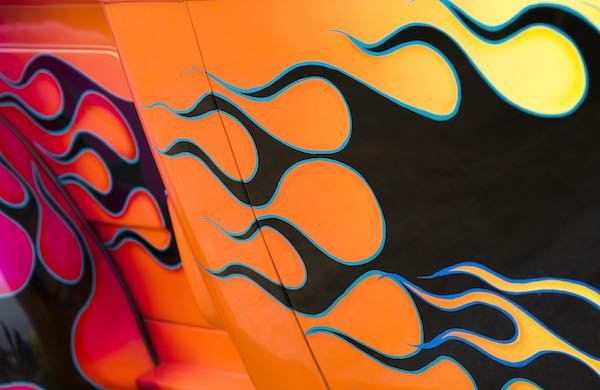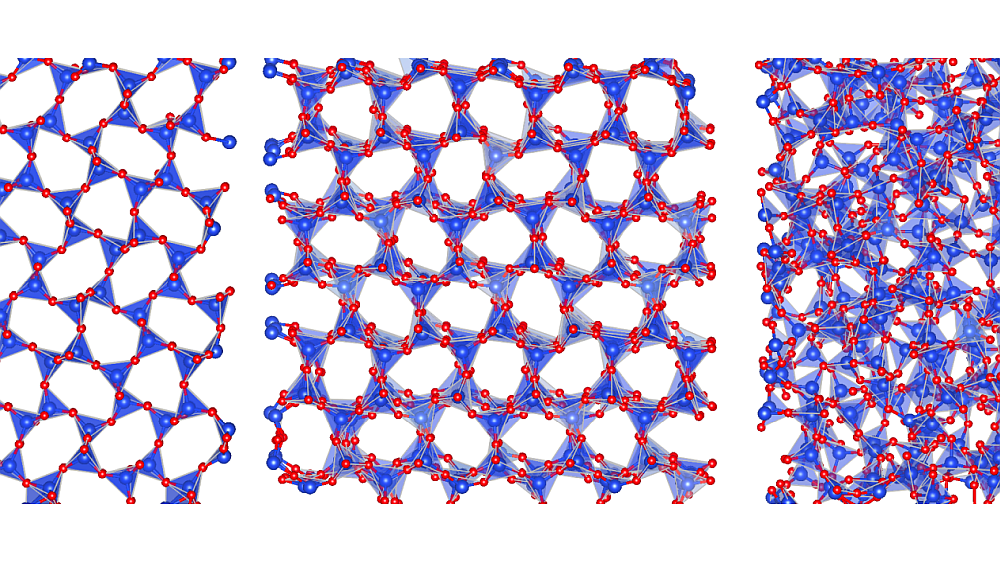
[Image above] Credit: Thomas Hawk; Flickr CC BY-NC 2.0
There’s nothing that catches my eye quite like a shiny, beautiful car. Especially a fast one.
And when it comes to fast cars, Aston Martin’s new barely street-legal hypercar is like no other. Codenamed AM-RB 001, this carbon fiber-clad vehicle “boasts truly radical aerodynamics for unprecedented levels of downforce in a road-legal car,” according to a recent Aston Martin press release. Which might be a good thing in such a light car with a roaring V12 engine.
Sure, the Aston Martin hypercar and all other beautiful cars have beautifully styled curves, eye-catching wheels, and other design elements to make them incredibly aesthetically pleasing. But there’s also one oft-overlooked technology that keeps those cars looking beautiful—the paint job.
Automotive paints generally consist of multiple thin layers of different materials that provide the car’s body with protection from corrosion, sunlight, hail, rogue shopping carts, bird droppings, and the myriad other insults our cars (or dream cars) are exposed to on a daily basis.
Typically, a base zinc phosphate layer protects the car’s naked body from corrosion, and an e-coat, primer, basecoat, and clearcoat are layered up on top to form a functional multilayer protective coating.
While incredibly functional, multilayer coatings pose a challenge for quality control, because analyzing each individual layer within a multilayer coating is no simple task. Especially when each layer is mere micrometers thick.
But for high-frequency terahertz radiation, that task may now be much simpler than we thought.
Scientists at University of Kaiserslautern and Fraunhofer Institute for Physical Measurement Techniques in Kaiserslautern, Germany, have developed a technique that uses time of flight measurements from terahertz pulses to resolve individual layers within multilayered surfaces—now all the way down to 4 micrometers.
Terahertz radiation is a non-destructive and non-invasive form of radiation within the microwave and optical wave range, with frequencies of 0.3–3 THz. Beyond the mere fact that this form of electromagnetic radiation has the best nickname—T-rays—terahertz radiation has some great postulated abilities, but so far its implementation has been stymied by major challenges.
The Kaiserslautern and Fraunhofer team focused on using the rays to measure automotive paints, but because tiny terahertz waves pass through most non-conducting materials—including ceramics and glass—the potential of this measurement technique expands across various kinds and materials of multilayer coatings.
According to a recent press release about the work, the team assesses individual layers within multilayer coatings by measuring reflections from a terahertz pulse of radiation onto the coating. Because the surface, substrate, and each layer interface have different pulse reflections, the team can measure time delays between reflected pulses to deduce layer thicknesses.
“By scanning the THz beam across the sample, a 2-D image of the layer thicknesses of each individual layer can be obtained,” lead researcher René Beigang says in a recent American Institute of Physics press release.
The key is in the team’s algorithm, which offers important improvements in thickness resolution over previous attempts at such terahertz technology. That algorithm allows the team to use a computer model to interpret the time-of-flight measurements to accurately measure layer thickness.
“By introducing an advanced regression procedure with a self-calibration model, our approach presents a framework that takes into consideration real industrial challenges such as the effect of wet-on-wet spray in the painting process. This is important because the multi-layer car coating process is complex, and a new approach is needed to improve vehicle paint quality control,” Beigang says.
The paper, published in Applied Physics Letters, is “Highly accurate thickness measurement of multi-layered automotive paints using terahertz technology” (DOI: 10.1063/1.4955407).
Author
April Gocha
CTT Categories
- Material Innovations
- Modeling & Simulation


